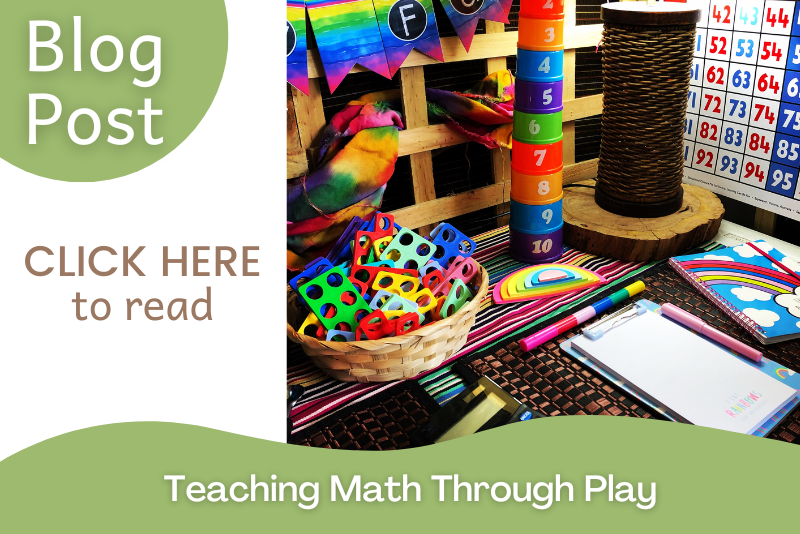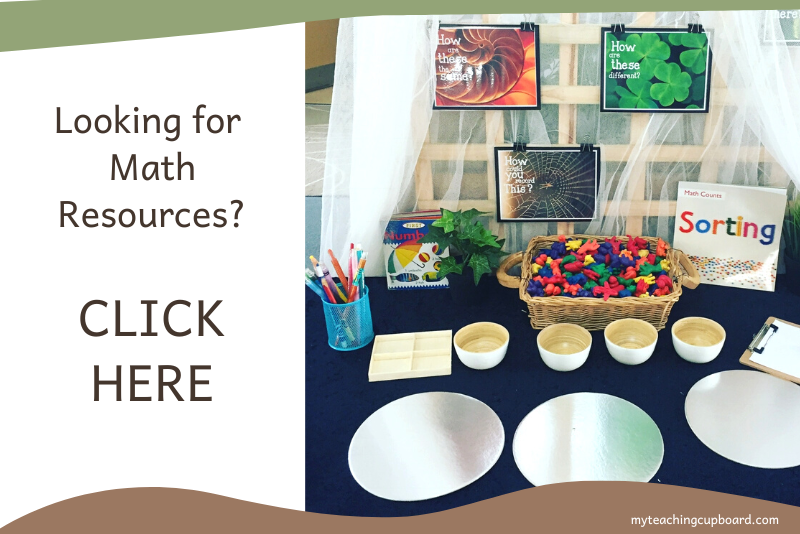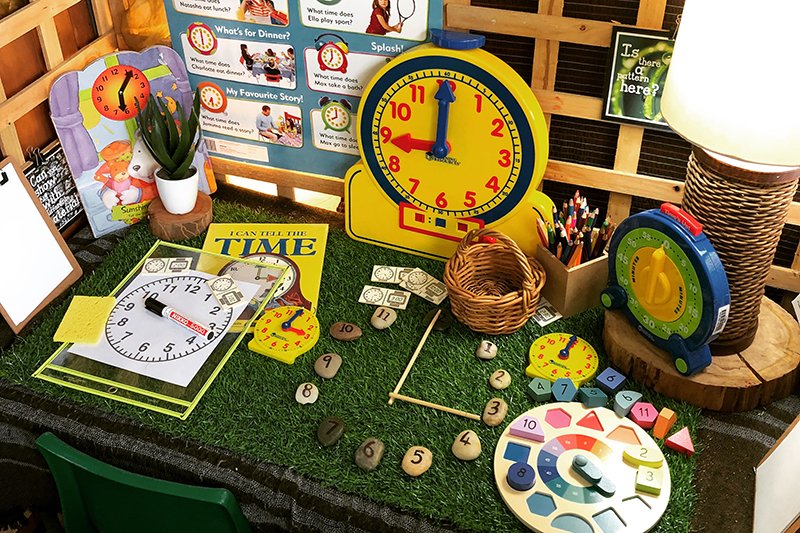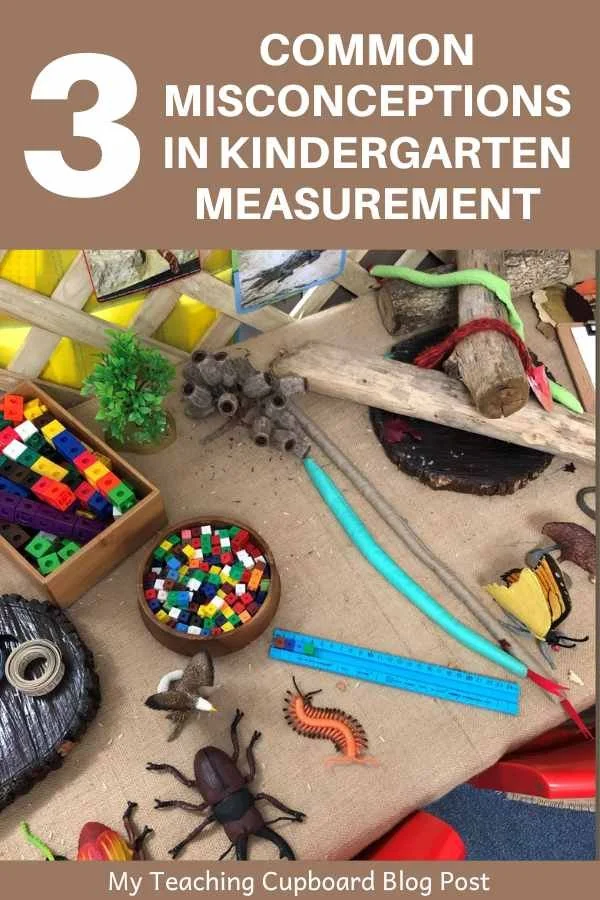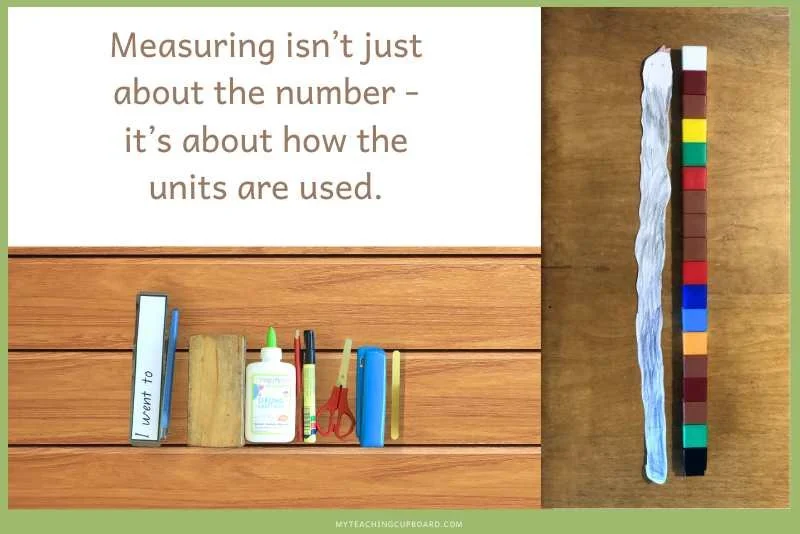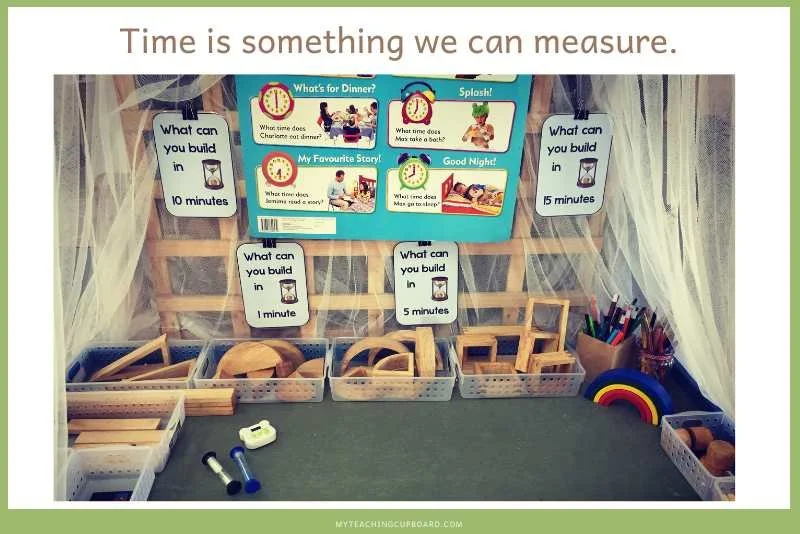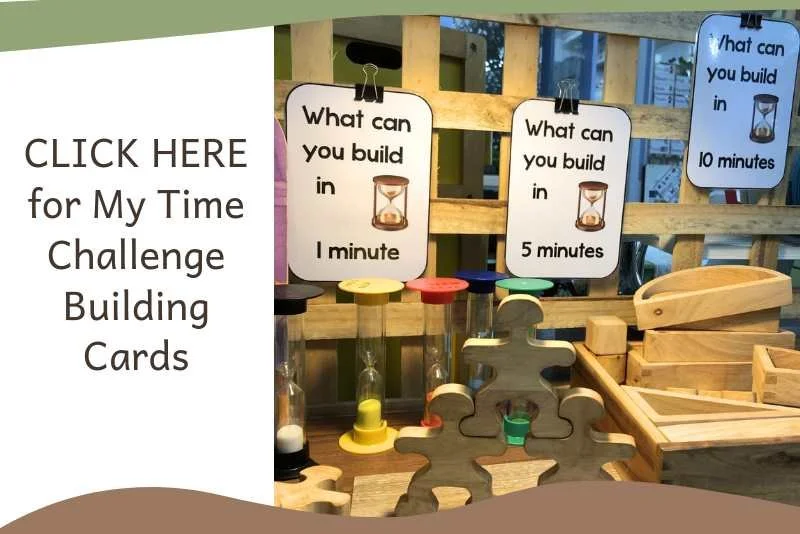9 Fun Hands-on Measurement Activities for Kindergarten
Kindergarten measurement made easy! Explore 9 fun hands-on activities using real tools, everyday objects, and playful provocations that help students build key math skills, vocabulary, and confidence.
How do you teach measurement in kindergarten? It isn’t the easiest math skill to teach that’s for sure! For young children to master measuring, they need to have pretty good fine motor skills and basic number sense concepts.
Preschool and kindergarten children learning to measure also need to learn a lot of new vocabulary along with new mathematical rules and procedures. That’s a lot for children to grasp. No wonder measuring concepts can be difficult for some children.
Ever started a measurement lesson only to realise your students don’t know how to line up two blocks in a straight line… or don’t actually understand what “longer” really means?
Teaching kindergarten measurement can feel overwhelming - you’re teaching abstract concepts and there’s hands-on chaos!
You’re introducing key concepts like capacity, length, and time but your students are still developing the fine motor skills and language needed to grasp it all. Add in short attention spans and wobbly number sense, and it can quickly become just tooooo much!!
But it really doesn’t have to feel like this.
I’ve compiled a heap of practical and fun measurement activities your kindergarten and preschool children will not only find success with but also love.
These are real activities I’ve used in my own classroom - ones that spark curiosity, build vocabulary naturally, and give children a reason to measure. Whether it’s lining up popsicle sticks to compare different lengths, using water bottles for capacity, or racing against the clock to explore time, you’ll find these ideas are not only age-appropriate but also easy to prep and embed into your daily routines.
The good news?
Measurement becomes much easier when we embed it in playful, hands-on experiences using non-standard measuring tools, everyday items, and open-ended provocations that make sense to young learners.
In this post, you’ll discover 9 engaging ways to teach measurement in a kindergarten class - complete with ideas for small groups, whole-group activities, and independent work. You’ll also get tips on how to tackle common misconceptions and how to align each activity with the Australian Curriculum - Mathematics Strand, so you can feel confident your students are learning the right skills in the right way.
There’s even a free set of measurement prompts you can grab to save yourself some time planning your next math block.
Take the stress out of teaching measurement and bring back the hands-on fun.
What is Measurement in Kindergarten?
Measurement is an important math skill with many real-world applications. Your students will build the foundations of measuring in kindergarten and preschool. These foundational skills will be built upon next year in first grade and then year after year as more difficult measurement concepts will be introduced at each grade level.
It is important to provide many opportunities for your young students to explore and practice measurement skills because mastering the basics now will set them up for success in the next stage and grade.
Measurement skills include all the skills a child needs in order to correctly measure something. It is the ability to not only effectively measure the physical attributes of objects but also encompasses the ability to use measurement tools accurately.
In kindergarten, students begin learning to compare, estimate, and measure the length, weight, volume, and duration of different objects using informal and non-standard measurement tools. This might mean measuring with snap cubes, popsicle sticks, hands, or even water bottles - tools that are familiar, fun, and age-appropriate.
These early experiences are where children first encounter key concepts like "longer than," "holds more," or "takes less time." Through hands-on fun and guided play, they begin to understand that measurement is about more than numbers - it’s about making sense of the world around them.
Measurement is an essential part of the Australian math and science curriculums.
Australian Mathematics Curriculum - ACARA
The Australian Mathematics Curriculum is organised into three content strands. They are
Number and Algebra
Measurement and Geometry
Statistics and Probability
These content strands are intertwined and build upon each other. Leave out any one of these content strands and your students will be left with gaps in their math skills and understandings. Developing measuring skills is just one step to effective mathematics instruction.
Measurement and geometry are presented together in the Australian curriculum. This is done to emphasise their relationship with each other. It is expected that your students will develop an increasingly sophisticated understanding of size, shape, position, and movement as they study the Measurement and Geometry content strand.
The foundational skills developed through kindergarten measurement also support learning across other learning areas - from science experiments and design challenges to dramatic play and block construction. This makes it a key part of your play-based classroom.
If you are interested in learning more about the ACARA Math Curriculum, check out this blog post: Teaching the F-2 ACARA Math Learning Intentions Through Play
This blog post explains in detail our F-2 ACARA Math Curriculum and how you can teach ALL the math learning intentions through a play-based pedagogy.
Australian Curriculum Measurement Skills
The Australian curriculum outlines 2 content descriptors for the foundation stage measurement strand.
To teach measurement effectively, you will need to provide learning experiences for your students to:
identify and compare attributes of objects and events, including length, capacity, mass and duration, using direct comparisons and communicating reasoning. (AC9MFM01)
sequence days of the week and times of the day including morning, lunchtime, afternoon and night time, and connect them to familiar events and actions. (AC9MFM02)
So, in the foundation stage (kindergarten, prep, or preschool), the measurement skills you will teach include:
measuring height, length, volume, and weight using direct comparison and non-standard units
recognising quantities that are more and less, most, and least
identifying and using vocabulary like big, medium, and small, as well as terms like bigger and smaller, longer, and shorter, taller, heavier and lighter
ordering up to 5 objects by size in both ascending and descending order
comparing objects by size (big, bigger, biggest)
sequencing events from a story or their experiences
understanding basic concepts of time, such as morning, afternoon, and night along with today and yesterday, or in a minute
distinguishing between the days of the school week and weekends and know the important events that happen on the various days of the week
In your kindergarten class, these learning outcomes will often be developed through hands-on investigations and measurement challenges using everyday items like lining up popsicle sticks to explore different lengths, pouring water between bottles to compare capacity, or timing a task with a sand timer to introduce the concept of duration.
These skills form part of a bigger picture. One where children learn to reason, compare, and explain their thinking using everyday language. That’s why embedding measurement into play-based learning experiences is so powerful - it connects these key concepts to the real world.
Why Teach Kindergarten Students to Measure?
Measuring is a skill we use consistently in our daily life. When you pour milk into your coffee, choose a new piece of furniture for your home, or bake some cookies you will be using your measurement skills.
Children also need measurement skills to perform their daily tasks. When they play in the sand pit, create a box construction, or fill their drink bottle, they will be measuring. They develop and use measurement skills from a very young age and often without even realising it.
From stacking blocks in the construction area to counting scoops of sand in the outdoor kitchen, measurement becomes part of children’s play and problem-solving without them even noticing. That’s why it’s one of the most natural (and essential!) ways to embed numeracy in a kindergarten class.
Learning to measure helps children develop important numeracy skills like estimating, counting, and recording data. These are necessary life skills and important for children to master.
But it’s not just about numbers.
Learning to measure gives children the tools to make comparisons, explain their reasoning, and work with different sizes, shapes, and quantities. These are the kind of skills that transfer across all areas of learning, from science experiments to dramatic play.
When your students explore measurement through hands-on fun, using everyday items and non-standard measuring tools, they will also build language, confidence, and independence. It’s a playful but powerful way to strengthen their foundation in kindergarten math.
Measurement Activities and Counting Skills
In kindergarten, children need to learn how to count just like they need to learn how to measure. They also need to have acquired basic number sense and counting skills if they are going to learn how to measure accurately.
Basic number sense is crucial because when we measure, we are counting units. Your students will need to have already formed good conceptual understandings of how numbers work so that they can draw upon and transfer these number understandings whenever they measure.
That’s why measurement activities should never be taught in isolation. When children compare different objects using snap cubes, count how many popsicle sticks long their shoes are, or estimate how many scoops will fill a container, they’re also reinforcing counting, quantity, and conservation.
These crossovers are where the magic happens. Students begin to connect abstract concepts like quantity and size to real-world experiences - and that deepens both their mathematical thinking and their engagement!
Giving your students opportunities to measure through thoughtful and carefully planned activities will give your students opportunities to develop their measurement skills and build on their number sense concepts.
By choosing measurement challenges that combine numeracy, vocabulary, and hands-on fun, you’ll be setting up your kindergarten class for success - not just in maths, but in logical thinking, problem-solving, and communication.
What’s the difference between standard and non-standard units?
Non-standard units of measurement are everyday items used to measure something without referring to a formal measuring system. Think of:
Unifix cubes
Paperclips
Popsticks
Blocks
Hands or feet
Cups or scoops
Pieces of string
Nonstandard units are perfect for introducing measurement concepts in a hands-on, visual way because children can focus on understanding "how much" or "how long" without needing to read numbers or understand formal units.
Standard units, on the other hand, are universally accepted measurement units found in formal systems like the metric or imperial systems. Examples include:
Metres, centimetres, and millimetres (length)
Kilograms and grams (weight)
Litres and millilitres (capacity)
Seconds and minutes (time)
We move to these once children understand the concept of measuring and can apply it using consistent, agreed-upon tools like rulers, measuring tapes, digital scales, or clocks.
How Do You Teach Measurement?
Practice. That’s the short answer!
Teaching foundation stage measurement concepts will mean you will be teaching new mathematical vocabulary and introducing new tools for your children to use. Both will require repeated practice.
To teach measurement in preschool and kindergarten, start by investigating what measurement is. Then discuss how things are measured. Next, teach your little ones how to directly compare objects before moving them on to any form of measurement using standard units.
Focus on one key concept at a time (like length, weight, or capacity) before layering in others. Start with everyday items and non-standard measuring tools that feel familiar, like counters, string, paperclips, or even their own shoes! This makes it feel more like play and less like a worksheet.
You will find your students naturally love learning about measurement through hands-on activities and real-world experiences. Play-based learning will provide your students with purposeful opportunities to learn and practice measuring. As early childhood teachers know, there's nothing quite like a hands-on experience to make the learning stick!
When children are given opportunities to explore measurement concepts through hands-on playful investigations and learning provocations, you will observe them building their skills, understandings, and measurement knowledge.
In small groups, you might explore different types of measurement tools or compare how many cubes long different classroom items are. During whole group time, you might invite the class to race against the clock or order water bottles from fullest to emptiest or tallest to shortest. These real-world, collaborative activities help reinforce the key concepts in memorable, engaging ways.
Use rich hands-on experiences to scaffold their learning by asking intentional questions about measurement. For example, in the blocks area, you can ask, “Which block is longer?” In the dramatic play space, you might ask, “Which doll is the smallest?” Or at the reading area, there will be opportunities to discuss the size and weight of different books.
Some of my favourite open-ended math questions to use for teaching measurement are:
How did you work that out?
Can you tell me more about that?
What tools can we use to measure this?
What happens if you try that again? Is it the same?
How can we compare these?
These are some of the questions from my Open-ended math question prompts. They help my children to verbalise their thinking and challenge them to think about math in different ways. They are great for not only learning about measurement but can be used in all three of the math content strands.
They make it really easy to prepare and set up aesthetically pleasing and educational math investigation areas. Just print them out and include one or two of these open-ended math question prompts and you’ll be taking your student's mathematical thinking to the next level.
The opportunities to embed measurement vocabulary and hands-on measurement experiences are endless in a play-based learning environment. When students are surrounded by intentional provocations, meaningful materials, and rich questions, they naturally begin applying non-standard measurement strategies in their play.
Providing your students with a variety of measuring tools and some measurement prompts like those above will help your students naturally incorporate more measurement concepts into their play.
9 Fun Hands-on Kindergarten Measurement Activities
Here are some practical and fun measurement activities examples your kindergarten and preschool children will not only find success with but also love.
These playful hands-on activities are easy to set up. All you need are some printed prompts and a few math resources commonly available in most kindergarten and preschool classrooms. Use these ideas to help you set up your own simple measurement activities - perfect for investigative play math centers.
Measurement Resource Shelf
Setting up a measurement resource shelf is one of the easiest measurement learning invitations you can offer in your classroom. Just collect as many measurement tools as you can get your hands on and store them on a shelf.
Here are some suggestions:
A meter stick
A few wooden rulers
Measuring tapes
Balance scales
A digital kitchen scale
Stopwatch
Sand timers
Digital timers
Measuring cups
Measuring spoons
A measuring jug
You can also add pencils, clipboards, graph paper, and sticky notes so your students can record their learning. You might also like to add some vocabulary cards, prompts, or posters and perhaps a few related measurement textbooks. Once your measurement resource shelf is set up, stand back and watch your students begin measuring anything and everything!
2. Capacity Activity for Kindergarten
Capacity activities are so easy to set up. You just need a few containers of various sizes and a sensory tray with a sensory base like rice, sand or water. You will be surprised how much time children will spend here filling and emptying the containers. They will be developing their estimating skills, conservation and fine motor skills too.
This prompt is from my 76 Measurement Provocations Pack for Foundation Stage
3. Another Favourite Capacity Activity
This is a great activity. My kids love this one and I love it too!!
This time the tray has been filled with dried corn kernels. This is my favourite filler as it is sooo much easier to clean up.
Make sure to offer containers in various shapes and sizes. If you can find containers that are different shapes but hold the same amount, they are great for building conservation concepts.
Did you notice the bottles filled with coloured water? I love how the children will always put them in order. Such a great way to build measurement vocabulary as they discuss which one is full and nearly full etc.
4. Indirect Comparison
Students can measure things with non-standard units at this learning invitation. Suitable non-standard units for measuring length could be paper clips, matchsticks, squares of paper, unifix cubes, MAB blocks or string.
You might observe some children directly comparing the objects. When comparing the length of objects make sure to teach your students to use a base line. I have found kindergarten and preschool children may not match the ends up so introducing the idea of a base line can help with this common measurement misconception.
5. Exploring Length and Height
Measuring can be integrated into other curriculum areas quite easily. Here a study on living things was integrated with height and length activities for kindergarten students.
Some of your students may think an object like a stick is a different length depending on whether it is vertical or horizontal. Play-based learning will provide you with so many opportunities to notice and remediate math misconceptions your students may have. It’s the perfect opportunity for instant intervention.
6. Exploring Balance
We always spend some time exploring balance before I introduce the balance scales.
When we introduce new mathematical concepts, we often assume our students already have the necessary pre-requisite knowledge but unfortunately this is often not the case.
This learning invitation was so quick and easy to set up. It was highly;y engaging and I observed children sorting, counting, and measuring all week. Some children designed challenge cards with photographs of their amazing balancing creations.
The printed prompt in this math provocation is part of a FREE set of math prompts you can download from my FREE Resource library. If you would like to use it in your classroom, you can grab the whole set HERE.
7. Measurement Provocation
At this measurement learning invitation, children are prompted to explore early measurement concepts.
This measuring length and weight activity for preschoolers and children in kindergarten is always a popular one. There’s something engaging about a balance scale that seems to draw children in.
8. Measuring Time
Learning about time is sometimes tricky with younger children. The concept of time is quite an abstract concept for them to grasp. This time measurement activity is so quick and easy to set up and will help preschoolers and kindergarteners begin to understand the concepts of measuring time.
This prompt is another one you can download and print for free. It’s another prompt from the set of 8 FREE printable measurement activities in my FREE Resource library.
9. Learning About Time
This one is the last of my 9 measurement classroom ideas. Children love the challenge of a timer. We often use timers and stopwatches in our classroom. A race against the clock creates so much excitement.
Here children are challenged to see what they can build in 3 minutes. I often include a small camera in this investigation area so students can record their constructions. We print them out and display them in the area.
If you like these measurement kindergarten activities, you will love the full set of 76 Measurement Math Provocations I have designed. There are so many more fun hands-on measurement activities for kindergarten or preschool children in this comprehensive pack. It’s like a complete measurement unit for the Australian curriculum - Foundation stage.
There are plenty of educational hands-on measurement activities included in this pack. In fact, it covers ALL the Measurement content descriptions for Kindergarten ACARA Foundation Stage. These engaging hands-on measurement activities will make your play-based math learning centers or investigation areas so quick and easy to set up.
This beautiful pack contains:
46 Prompts for using direct and indirect comparisons to decide which is longer, heavier or holds more, and explaining reasoning in everyday language. (ACMMG006)
21 Prompts for comparing and ordering the duration of events using the everyday language of time. (ACMMG007)
8 Prompts for connecting days of the week to familiar events and actions. (ACMMG008)
14 reproducible recording sheets to fit A5 clipboards
Instructions to tile print the prompts so you can change the printout size to suit your centers
Inspiring photos for ideas on how to set up your learning invitations
Lists of possible hands-on resources you can add to each center
BONUS vocabulary cards
It includes all the math provocation prompts you will need to set up hands-on measurement investigation areas in your kindergarten classroom.
EASY TO PREP AND ORGANISE
A total of 76 different provocation prompts are ready for you to print and use in your classroom. Inspirational photos are also included to help you set up engaging age-appropriate learning invitations which are easy and quick to set up.
So now you have some educational and engaging ways to teach measurement in your kindergarten or preschool learning space. Through hands-on, playful investigations, measurement can become one of the easiest math skills to teach.
3 Common Misconceptions in Measurement
If you’ve ever heard a child say a tall skinny cup “holds more” than a short wide one, or watched a little one measure a desk using snap cubes that didn’t quite touch end to end - you’ve seen a measurement misconception in action.
These misunderstandings are incredibly common in early childhood, especially when children are still developing number sense, vocabulary, and spatial awareness. But they’re also a valuable starting point. Once you know what to look for, you can turn these tricky moments into rich teaching opportunities.
Here are a few of the most common misconceptions you might encounter in your kindergarten class:
1. “Taller means bigger” — Confusing height with overall size
Children often assume that a taller object is automatically heavier, longer, or holds more because it looks bigger. This can lead to confusion when comparing containers or blocks of different shapes and sizes.
It’s a misconception linked to the idea of conservation - the understanding that quantity doesn’t always change just because the appearance does. A tall, narrow container may look like it holds more than a short, wide one, but the reality often surprises young learners. The same goes for weight - some children believe a heavier container must hold more, even when it's smaller.
How to help: Set up a measurement provocation with thoughtfully chosen containers that look deceptive. Think about providing a short, wide cannister and a tall, thin cup or bottle. Then invite students to test and compare using a consistent non-standard measurement tool like a small scoop or spoon. Have them fill each container with the same unit and count how many it takes.
You might hear: “Wait… that one took more even though it’s shorter!”
Have students record or take photos of the results and reflect together. Prompt them with questions like:
“Was your guess right? Why or why not?”
“What did you notice when you used the same scoop each time?”
“Does heavier always mean it holds more?”
These kinds of hands-on measurement challenges create those magical “aha!” moments we teachers love. They help shift thinking and deepen understanding.
2. Inconsistent measuring with non-standard units
Young children may measure a pencil using paperclips, but leave gaps between each one or accidentally overlap them. Some may not line the first unit up properly with the end of the object, or they might switch units halfway through (first paperclips, then cubes!) They might not even realise that these inconsistencies make their measurements inaccurate.
It all leads to incorrect answers and confusion around what measurement really means.
How to help: Model how to measure using one consistent unit, placed end to end with no gaps or overlaps. Show how to begin measuring from the very edge of the object and explain why the placement of each unit matters. This helps children develop good practises and understand that measuring isn’t just about the number - it’s about how the units are used.
I like to use a straight edge (like a ruler or the edge of a clipboard) placed next to the item being measured. This gives students a visual guide to help them align their units accurately and reduce spatial errors.
Be intentional with your language too:
“Let’s choose just one kind of tool to measure with.”
“Can you check if your cubes are all touching each other?”
“Where did you start? Did you go all the way to the end?”
When students understand the importance of consistent units and careful placement, their accuracy improves - and so does their confidence. These habits will carry forward as they move toward using standard tools like rulers or measuring tapes.
3. “This one took longer because it was more fun” — Confusing experience with time
Young children often struggle with telling time or comparing durations because time is such an abstract concept. They may believe something took longer because it was boring or involved more steps or they might think an activity was faster simply because it felt more fun or was more engaging, even if it actually took the same or more time.
How to help: Introduce time as something we can measure - just like length or weight - using familiar tools. In kindergarten, this might mean starting with simple everyday items like sand timers, stopwatches, or even a timer app on your interactive whiteboard. Try using playful, low-pressure challenges like: “How many blocks can you stack before the sand runs out?” or “What can you build in two minutes?” These types of measurement challenges help children connect the idea of time to something physical and observable.
Encourage reflection afterwards:
“Did that feel fast or slow?”
“Was the timer finished when you were done?”
“How could we check how long that took?”
Use a mix of whole group and small group activities to explore the concept of duration. You might even photograph or video student work to compare activities the next day. Over time, children begin to build a more accurate sense of time and learn that it can be measured just like any other quantity. Telling time is a long-game skill. But it starts right here, with consistent exposure, meaningful comparisons, and playful opportunities to explore what “time” really means.
Play-Based Learning Makes It Stick
If you’ve ever watched a child line up pebbles from smallest to biggest at the nature table, or pour water from cup to cup until it spills “just a little bit” - you’ve already seen measurement and deep learning in action.
Play is where kindergarten measurement truly comes to life. In a play-based classroom, measurement isn’t a one-off math lesson. It’s woven into the daily rhythm of your classroom. It happens naturally in block towers, dramatic play cafes, sandpit constructions, and loose parts creations.
Here are just a few engaging ways measurement naturally unfolds through play:
Block Play
Children compare height, length, and balance as they build. You might hear: “This tower is taller than yours!”
Add snap cubes or string nearby to encourage and invite them to measure their constructions together.
Dramatic Play
In the home corner or classroom café, children measure ingredients, pour drinks, and estimate “how much” or “how full.” Use water bottles, measuring spoons, or even non-standard measuring tools like scoops and cups to extend the experience. Add real water and non-standard units like loose parts (snap cubes, MAB blocks, paperclips and counters) to encourage exploration of measuring with non-standard units.
Loose Parts & Nature Play
Offer everyday items like corks, pinecones, buttons, and sticks to sort by different sizes or line up by length. Ask open-ended questions like “Can you find three things longer than this feather?” or “How many blocks long is your stick?”
Time Challenges
Turning measuring time into an irresistible game is an engaging way to teach a very abstract concept. Use timers to challenge your children. Set up provocations with the prompt: “How tall can you build a tower in 2 minutes?” and add a small digital camera for students to document their constructions. It is so much fun and they’ll be so eager to compare them.
What’s powerful about play-based measurement is that it doesn’t just teach key concepts, but that it makes them meaningful. Children measure with purpose: to compare, to build, to solve, to share. This is what makes the learning stick.
And the best part?
You don’t need to reinvent your room to do it. With the right provocations and vocabulary prompts in each area, your classroom becomes a rich measurement landscape, all without adding extra to your plate.
Making Kindergarten Measurement Meaningful
Measurement might seem like one of the trickier concepts to teach in early childhood - but with the right approach, it becomes one of the most engaging, hands-on parts of your maths program.
Throughout this post, you’ve seen how foundational measurement skills like comparing length, estimating capacity, and understanding time can be taught through playful experiences that are naturally embedded into your day.
You don’t need fancy tools or complex lesson plans. Just a few well-chosen materials, the right prompts, and the freedom for your students to explore with curiosity. Whether you’re measuring with cubes, lining up popsicle sticks, or racing a timer to complete a building challenge, these activities connect maths to meaning.
And best of all?
You’re not only building key concepts and important math skills - you’re also building confidence, independence, and mathematical thinking that will carry through the whole year and beyond!
Want to make it even easier to plan?
Need help setting it up?
My Measurement Math Provocation Pack makes it easy to create engaging, curriculum-aligned learning invitations across your whole classroom.
It includes 75 play-based prompts that align directly with the Australian Curriculum. It’s filled with ready-to-use ideas for your classroom, including vocabulary cards, recording sheets, and inspiring setup photos.
👉 Grab it here and take the prep work off your plate.
👉 Or, if you’re just getting started, you can get my free download - a sample set of printable measurement prompts from the Free Resource Library to get you going.
Because when we make maths meaningful, we make it memorable. And that’s the kind of learning that sticks.
If you found this blog post of 9 Fun Hands-on Measurement Activities for Kindergarten useful, others might too. Please consider sharing it…
Just CLICK the sharing box below.👇



